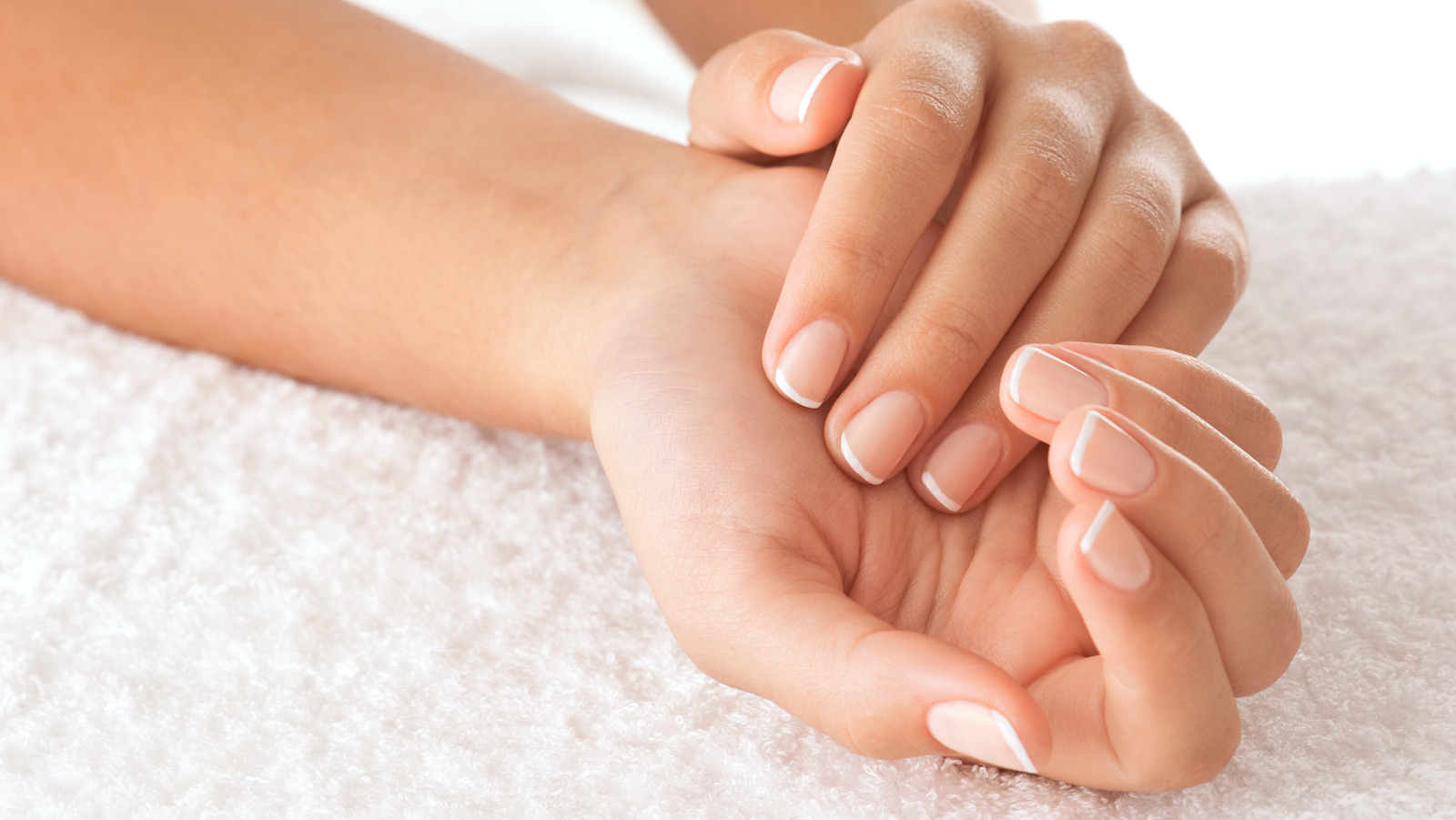Nails are the final part of your body to regenerate after an illness or accident, making them a fantastic sign of your general health and wellbeing. They typically grow at a pace of 0.1 mm every day, which makes them an excellent indicator of how your body is doing.
Additionally, nails have nerves that, when touched or hurt, relay information to the brain. If you want to know if a wound is serious, this can be helpful!
Facts About Your Health That Your Nails Can Tell You
Various illnesses, including psoriasis, diabetes, and kidney disease, can damage the nails. Additionally, they can demonstrate whether you are deficient in any essential nutrients, such as zinc, iron, or vitamin B12. Here are several indications that your body may be making through your nails:
Orange nails
Orange Nails Yellow or yellowish nails can be brought on by a number of illnesses and may even be a sign of a more serious illness. Yellow nails are a condition that many individuals experience. This might be the result of a fungus infection or a symptom that you’ve been smoking too many cigarettes with too much nicotine.
One of the most frequent causes of yellow nails is a fungal infection, often known as onychomycosis. This kind of infection happens when the nail bed contains certain fungal spores. Your nails will become inflamed as a result of these spores growing there, turning them yellow.
You may also have yellow nails as a result of nail biting. The bacteria and keratin fragments in the nail bed cause a yellow tint when you bite your nails, which frequently results in
White flecks
White spots on the nails Nail damage is typically the cause of white spots on the nails. Lack of nutrition in the body, repeated chemical exposure, or even bacterial infection can all result in harm. A health condition like diabetes or kidney failure may be indicated by white spots on the nails.
Your fingernails may develop white spots as a result of dry skin. Too much calcium in your body is the biggest contributor to this. Although calcium is necessary for the development of healthy bones and teeth, an excessive amount can accumulate in the body and negatively impact other organs like the heart and kidneys.
Another prevalent illness that results in white patches on the nail is nail psoriasis. People with diabetes or compromised immune systems are more likely to experience this. Skin cells develop improperly and accumulate under the nail as a result of nail psoriasis. People with diabetes or compromised immune systems are more likely to experience this. Skin cells develop improperly and accumulate under the nail as a result. Finally, this exposes the nail bed underneath your fingernail or toenail, making it thicker than usual.
Brittle or cracked nails
Bruised Nails Your nails grow increasingly fragile and prone to breaking or cracking as you age. This is brought on by a decline in keratin, a protein that accounts for around 90% of the mass of your nail. Your nails get thinner, more delicate, and more susceptible to splitting or breaking as you get older because you create less keratin.
Trauma is typically the cause of cracked or brittle nails. Your nail may break or crack if you strike it against something hard. The damage caused by this kind of injury typically does not significantly alter the nail’s look. However, if the nail comes away from the nail bed, this is an emergency and has to be treated by a doctor right away.
Rarely, some treatments, such as terbinafine and methotrexate for psoriasis, and psoriasis drugs like methotrexate, might alter the appearance of the nails. Talk to your doctor before quitting any medicine you’re taking if it’s been shown to affect your nails, because doing so could exacerbate any underlying conditions you may have.
Nail color issues
Nail color issues Splinter hemorrhages are the most frequent cause of discolored nails. When you accidentally scrape your finger or thumb with a sharp instrument, like a utensil or fingernail, a splinter hemorrhage might happen.
The injury causes the blood vessels under your nail to enlarge and inflame. The nail appears stained because the blood that seeps into the surrounding tissue gives it a blue or purple hue.
Splinter hemorrhages are not dangerous and will go away by themselves if left untreated. Although they don’t need any special maintenance, you should refrain from picking at your nails to prevent further damage.
However, discolored nail lines are much more hazardous. One indication of melanoma, a form of skin cancer, is these dark lines. During a visit to the doctor’s office, discolored nail lines are frequently discovered. Sometimes they are difficult to see, but a physical examination may reveal them. You might be assessing your own skin for skin cancer symptoms, or your doctor might see the discoloration when inspecting your nails for other issues.
Streaks of brown or black color running across the nail bed are the most typical type of discoloration. It may appear as a dark shadow across a portion of your nail bed or cover all four corners of a single nail. The majority of the time, this type of melanoma is not uncomfortable or itchy, but it might bleed and hurt if it spreads to nearby bones or tissue.
Damaged nails
Angular Nails A small pit or indentation will emerge on the surface of the nail as a result of the condition known as “nail pitting.” People who have psoriasis, eczema, and various other skin problems are more likely to develop pitted nails.
If you bite your nails or use too much nail polish remover, your nails may also develop pits. Your nails may become weak and brittle as a result of the chemicals in nail polish remover, making them more prone to developing holes. Your nails may become discolored along the ridges of your nails if you use nail polish remover too frequently. Additionally known as mechanical stress, this is
Pitted nails can be treated in a variety of ways, including with topical creams and lotions as well as prescription drugs that strengthen the nail and enhance its look.
Sharp nails
Rounded Nails Nail ridges might indicate a wide range of health issues. They may result from an infection as well as damaged cuticles or skin. Additionally, certain vitamin deficiencies and autoimmune diseases can cause ridged nails.
Injury or trauma to the nail bed, the soft tissue that extends from beneath the nail plate, is the most frequent cause of ridged nails. When you strike your finger or toe against anything hard and there is bleeding behind the nail plate, trauma can happen. The blood clot that gradually grows is seen as a dark line that is encapsulated in the developing nail. Repeatedly doing this over time may cause permanent nail modifications, such as ridges or grooves.
Other factors include dry skin and nails, which can result in cracks and fissures that are more prone to harm. Additionally, dry skin makes it more difficult for your body to produce new cells, which could be a factor in the development of nail ridges.
Colored nails
Bluish Nails There are a number of causes for bluish nails. The most frequent cause of increased hemoglobin in the blood capillaries that supply the nail bed is inadequate circulation in the fingers. As a result, they have a top that is blue or grayish-blue with a white tip.
Bleeding under your nails over time might also result in a bluish hue. Bruising under your nail plate can result from minor wounds like injuring your finger or running into something.
This bruise may be intense and unpleasant for several weeks, turning the affected area a dark blue color. To rule out other potential problems like osteoarthritis or vascular disease, consult your doctor if you have any suspicion that this is the cause of your bluish nails.
Biting one’s nails
In general, nail biting is an impulsive condition that may have emotional causes. It’s easy to turn to an activity like nail biting as a means of calming down while feeling anxious or upset. When bored or lonely, the same thing takes place. Some people find solace in biting their nails or engaging in activities that divert their attention from how they are feeling.
Biting one’s nails is a highly prevalent issue. About 25% of kids and 10% of adults both bite their nails.
Biting your nails can result in bleeding, frequent nail breaking and splitting, and perhaps even infection.
If you bite your fingernails often enough, it might cause irreversible damage that prevents them from ever growing normally again. If this occurs, it may be difficult for you to grow new, healthy fingernails since there won’t be enough room in them for growth. Because there is less protection over the delicate tissues beneath the surface of the nail plate, they may also be more susceptible to infections.
Crimson nails
Luminous Nails It’s crucial to keep in mind that not all reddish nails indicate ill health. But it’s time to consult your doctor if you also have other symptoms like pain, swelling, or tenderness in addition to your red nails.
Because they’ve been biting too hard, those who bite their nails may also have a reddish tint under their fingernails. Biting your nails can make them bleed or break open, allowing blood to flow beneath them into the matrix. Since the bleeding stops and the cells regrow normally when you stop biting your fingernails, it typically goes away.
Conclusion
Like other aspects of our bodies, the condition of our nails reflects how we are feeling physically. Any anomaly in their state could be a sign of an underlying medical issue because our nails serve as a reflection of the underlying anatomy of our hands and fingers.
If you observe any abnormalities in your fingernails, you should probably pay your doctor a short visit.




